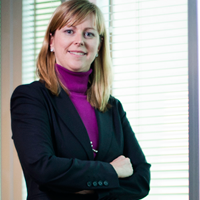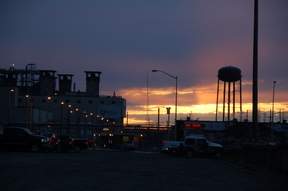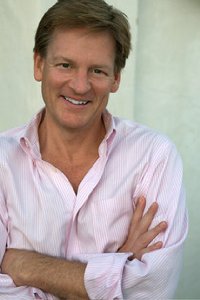How many guys does it take to build an Automated Teller Machine (ATM)? Two.
OK. Not really. That’s a bit of an oversimplification but it has at least a kernel of truth.
Luther Simjian held patents on all kinds of things – including an army flight simulator, a colour x-ray machine, a self-focusing camera, an exercise bicycle and a teleprompter – but he was best known for his work on the Bankograph, a machine that could accept cash or check deposits at any hour of the day or night.
Simjian’s Bankograph was able to accept cash or check deposits at all hours. He sold his machine to a New York City bank in 1960, but the idea didn’t really catch on with most customers at the time, although a revolution in customer oriented automation was just around the corner, and would also include photobooths, candy dispensers and gas stations, noted Bernardo Batiz-Lazo, and Robert J.K. Reid, of the University of Leicester and University of Glasgow, respectively, in their academic paper, Evidence from the Patent Record on the Development of Cash Dispensing Technology, produced for the New York-based Institute of Electrical and Electronics Engineers (IEEE) 2008 History of Telecommunications Conference. Bernardo Batiz-Lazo is currently a professor of business history and bank management at Bangor University in Wales. He is also the co-author, with Tom R. Harper, of the 2013 book Cash Box: The Invention and Globalization of the ATM. Batiz-Lazo is a fellow of the Royal Historical Society, and is a world-class authority on the automation of banking, financial technology, and cashless retail payment. Robert J.K. Reid is with the Department of Economic & Social History at the University of Glasgow.
“The only people using the machines were prostitutes and gamblers who didn’t want to deal with tellers face to face,” Simjian told the A&E Television Network’s History channel. “The most successful early deployments took place in Europe, where bankers responded to increasing unionization and rising labor costs by soliciting engineers to develop a solution for after-hours cash distribution,” Batiz-Lazo wrote for The Atlantic magazine in a March 26, 2015 article headlined, A Brief History of the ATM: How automation changed retail banking, an Object Lesson. In the cross-disciplinary 2004 volume, Wiring Prometheus: Globalisation, History and Technology, edited by Peter Lyth, a lecturer in German history at Catholic University of America in Washington, D.C., and Helmuth Trischler, head of the research department of the Deutches Museum and Professor of History and History of Technology at the University of Munich in Germany, Aberystwyth University Welsh historian Richard Coopey, however, concluded that banks “in the United States and Britain considered direct costs a minor factor of purchasing systems …. [they] had little, if any, accurate idea of the cost-benefits of computing.”
In an article headlined. “Fast Machine With a Buck”, Pacific Star and Stripes reported on July 7, 1966 on a Japanese device called the “Computer Loan Machine, ” which supplied cash as a three-month loan at a five per cent interest rate per annum after inserting a credit card in the machine.
While Simjian’s American machine was useful for people who just wanted to make deposits, it took another inventor to create a machine that could dispense cash. That inventor was England’s John Shepherd-Barron, who in 1965 got the idea for a cash-dispensing machine while taking a bath after finding his bank closed. It was his habit to withdraw money on a Saturday, but on this particular weekend he had arrived one minute late and found the bank doors locked. He was inspired by chocolate vending machines: “It struck me there must be a way I could get my own money, anywhere in the world or the UK. I hit upon the idea of a chocolate bar dispenser, but replacing chocolate with cash,” Shepherd-Barron later said. He sold his idea to London-based Barclays Bank.
He bumped into the chief general manager of Barclays Bank later in 1965, who was about to have lunch. Over a pink gin, Shepherd-Barron asked him for 90 seconds to pitch his idea for a cash machine,” The Telegraph recalled in May 2010.
“I told him I had an idea that if you put your standard Barclays cheque through a slot in the side of the bank, it will deliver standard amounts of money around the clock.
“He said, ‘Come and see me on Monday morning’.”
Barclays commissioned Shepherd-Barron to build six cash dispensers, the first of which was installed at a branch in the north London suburb of Enfield on June 27 1967, and was a signal moment marking the dawn of contemporary digital banking. The actor Reg Varney, star of the ITV sitcom On the Buses, was on hand to be the first to withdraw cash. Two other independent machines were also deployed in 1967, notes the Sioux Falls, South Dakota-based ATM Industry Association (ATMIA). One was located in Uppsala, Sweden,designed by Asea-Metior (today ABB) at the behest of the Swedish savings banks.This machine was called Bankomat. A second device was engineered by Chubb for the Westminster Bank (today RBS Group) in London.
Shepherd-Barron also came up with the idea of a four-digit PIN. When Shepherd-Barron was conceptualizing PINs, he envisioned them being six digits – it was his wife who suggested they be four.
“Over the kitchen table, she said she could only remember four figures, so because of her, four figures became the world standard,” he later told BBC News.
With plastic bank cards bearing magnetic strips yet to be invented, Shepherd-Barron’s early machines used special cheques that were chemically coded by being infused with carbon-14, a radioactive isotope. Customers placed the cheque in a drawer, the machine detected the material and matched the cheque against a PIN before paying out. The maximum withdrawal originally was £10 or about $14.
The Canadian Imperial Bank of Commerce (CIBC) unveiled its first Canadian automated teller machine called a “24 hour cash dispenser,” on Dec. 1, 1969.
By 1970, several U.S. banks had invested in ATMs. One Ohio-based bank tried to appeal to female customers by advertising their new machines with commercials that played every 25 minutes during a six-hour Paul Newman movie marathon.
ATMs really started to catch on in the United States in January 1978 after New York City was hit by a huge blizzard that shut down banks for days. Citibank had invested millions into installing ATMs all over the city the previous year, so people could still get cash even though banks were closed. During the blizzard’s aftermath, ATM use increased by 20 per cent.
According to Smithsonian magazine, there are two Wells Fargo ATMs at McMurdo Station in Antarctica. In a 2010 interview with NeedCoffee.com, David Parker, senior vice president of digital branch & ATM at Wells Fargo, explained that one operates as a backup machine and only one ATM actually functions at a time.
You can also follow me on Twitter at: https://twitter.com/jwbarker22























